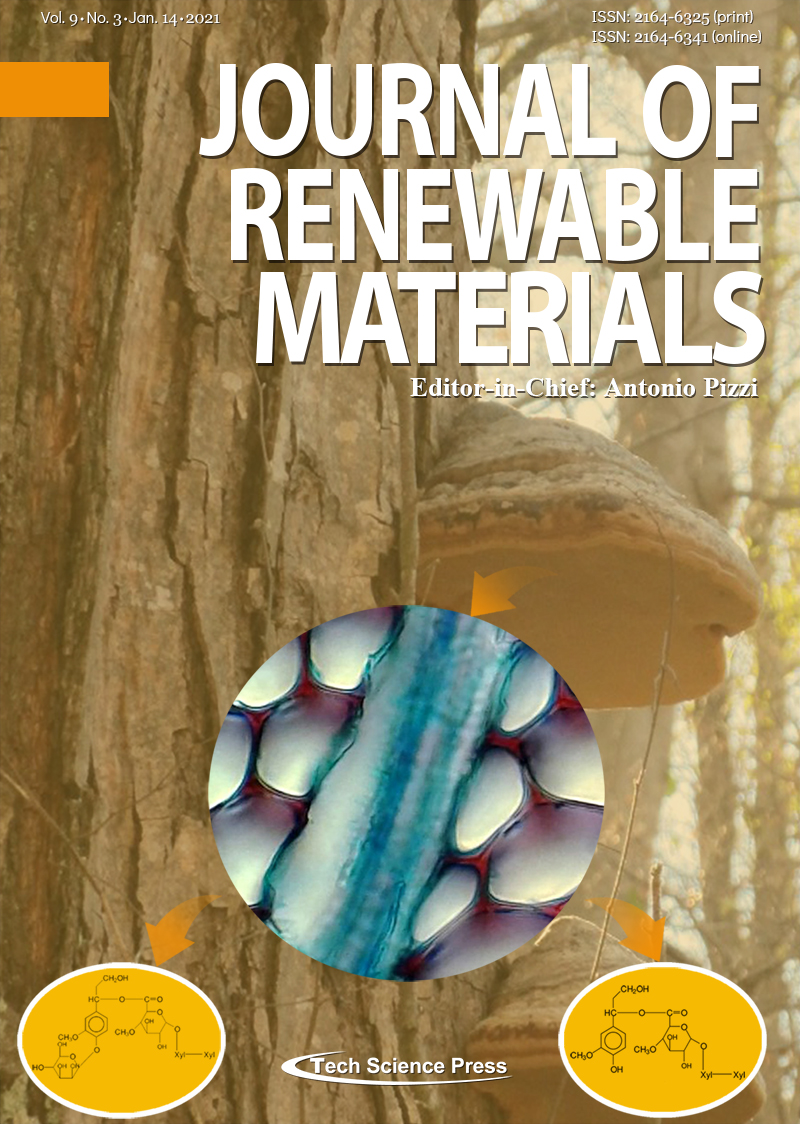Flexible Nanopaper Composed of Wood-Derived Nanofibrillated Cellulose and Graphene Building Blocks
Qing Li1, Ming Dai1, Xueren Qian1, Tian Liu1, Zhenbo Liu1, Yu Liu1, Ming Chen1, Wang He1, Suqing Zeng1, Yu Meng1, Chenchen Dai1, Jing Shen1, Yingtao Liu1, Wenshuai Chen1, Wenbo Liu1,*, Ping Lu2,*
Journal of Renewable Materials, Vol.9, No.3, pp. 451-461, 2021, DOI:10.32604/jrm.2021.011655
- 14 January 2021
(This article belongs to the Special Issue: Nanocellulose and Nanocellulose-Derived Functional Materials)
Abstract Nanopaper has attracted considerable interest in the fields of films and paper research. However, the challenge of
integrating the many advantages of nanopaper still remains. Herein, we developed a facile strategy to fabricate
multifunctional nanocomposite paper (NGCP) composed of wood-derived nanofibrillated cellulose (NFC) and
graphene as building blocks. NFC suspension was consisted of long and entangled NFCs (10–30 nm in width)
and their aggregates. Before NGCP formation, NFC was chemically modified with a silane coupling agent to
ensure that it could interact strongly with graphene in NGCP. The resulting NGCP samples were flexible and
could… More >
